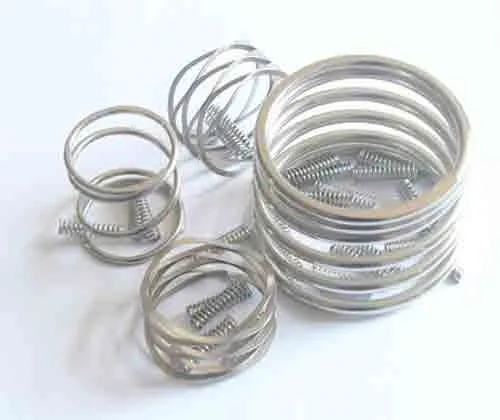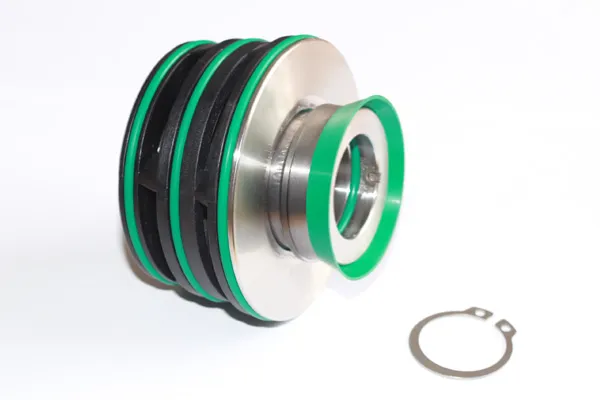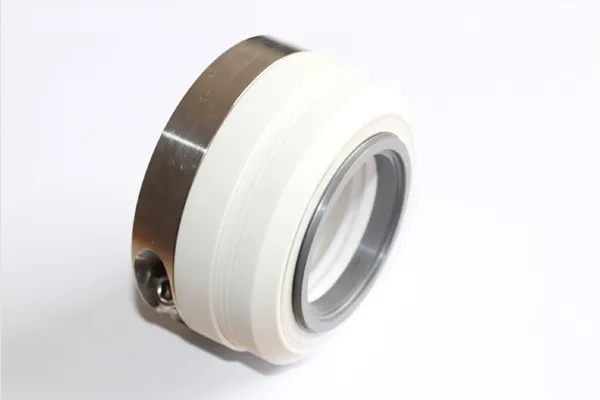CLOSE
Search

Seal Spare Parts Spring
Introduction of Seal Spare Parts Spring
For a mechanical seal, the initial closing force ensures that the seal will function properly from startup. In end- or rotating-face mechanical seal designs, the initial closing force is provided by a spring component, which can be a single coil spring, multiple coil springs, a deflected bellows unit (elastomer or metal), or formed or flat springs. Initial biasing forces also can be created by magnets, compressed elastomers or any other means of applying a closing force between sealing elements.For single spring mechanical seal, the seal body is sprung by either a metal or rubber bellows, a series of small springs, or by a single coil spring. These seals must be fitted with the correct coil spring for the rotation of the shaft. The major cause of failure of this type of seal is a broken drive spring. This is due to the use of 316 SS stainless steel as the coil material. The spring has to maintain the drive of the seal head and to flex with the seal head as it rotates. Any mis-alignment in the stationary face will cause the seal head to flex twice in every rotation. Stainless steel suffers from chloride stress corrosion therefore as the spring is under constant stress and probably exposed to chlorides, cracking will occur in the spring, leading to complete failure.
The same effect can occur when the seal is fitted with a series of small springs if they are constructed from SS316. A better material to use is Hastelloy C which does not suffer from chloride stress corrosion.
Function of Spring
The purpose of the springs is to hold the seal shut when the pump is stopped. In the case of the many less expensive seal the spring is also used to drive the rotating head of the seal.When the pump is running the pressure in the seal chamber, being higher than the outside pressure, acts upon the seal surfaces to increase the closing force. Higher closing force means that any lubricating effect between the seal faces is marginalized leading to higher friction, more heat generation, and increased wear. Seal design can mitigate this increase in closing force. The design of a balanced seal incorporates surfaces to reduce the load imposed on the seal by the chamber pressure. By this means a manufacturer can reduce the pressure on the seal faces and produce the longer life of the seal.
| Shapes | Directions |
| Coil | Left |
| Conical | Right |
| Wave | |
| Bellow |
Materials of the Seal Spare Parts Spring
- SS304
Because it contains nickel, it is more resistant to corrosion and heat than steel alloys.
SS304 is commonly used in household appliances, building decoration, parts of vehicles, medical equipment, food industry, etc.
- SS316
SS316 stainless steel is mainly used in pulp and paper equipment heat exchangers, dyeing equipment, film processing equipment, pipelines, external timber for the coastal area.
- Hastelloy C
Characteristics of Seal Spare Parts Spring
- In the two states of oxidation and reduction of the atmosphere, it has excellent corrosion resistance to most corrosive media.
- Excellent resistance to pitting, crevice corrosion and stress cracking corrosion.

Get In Touch With SEALCON
Want the mechanical seals price list? Fill out the form and we'll get back to you ASAP.
 English
English français
français Deutsch
Deutsch Español
Español italiano
italiano русский
русский português
português العربية
العربية ไทย
ไทย čeština
čeština Polska
Polska








